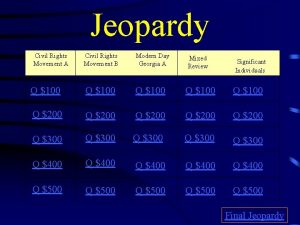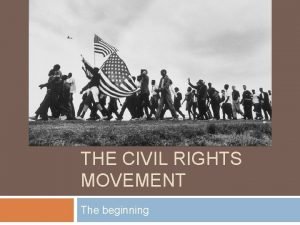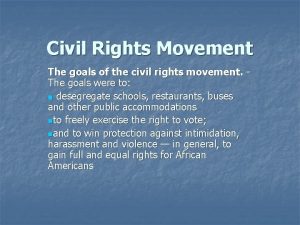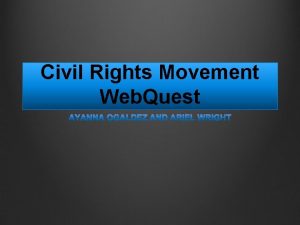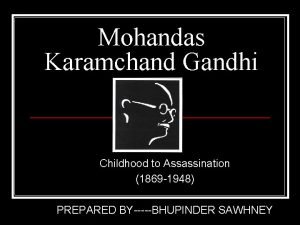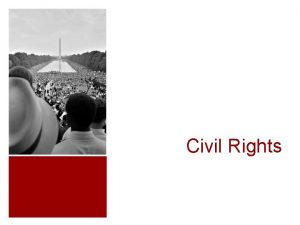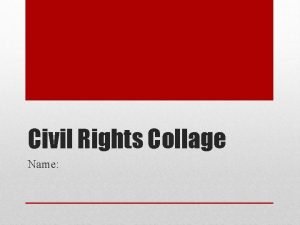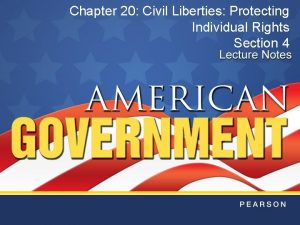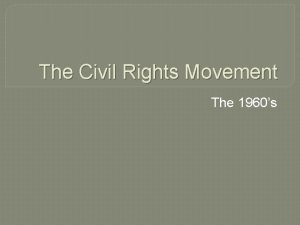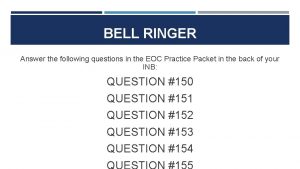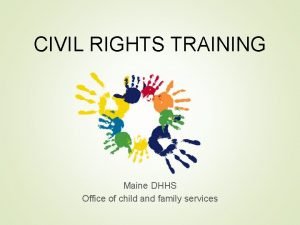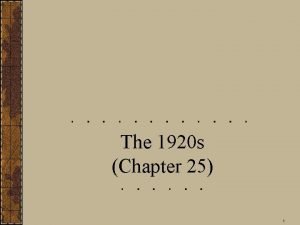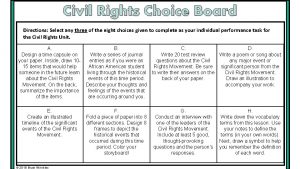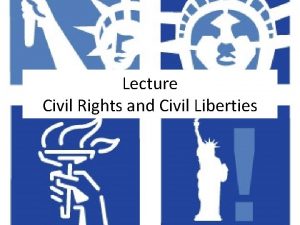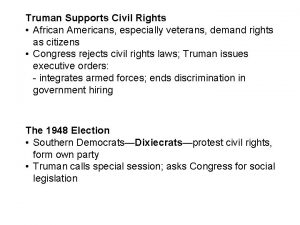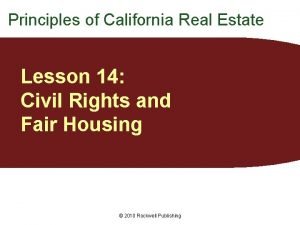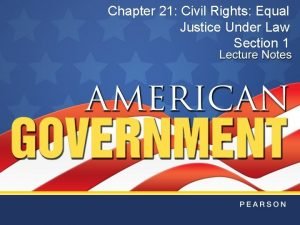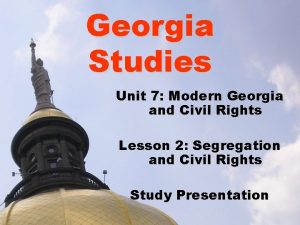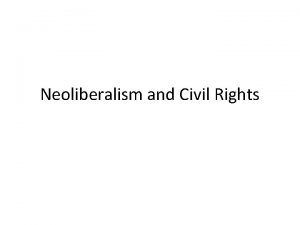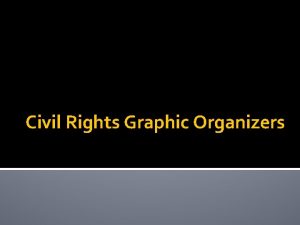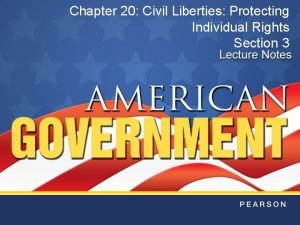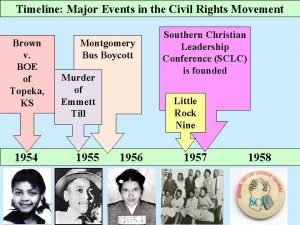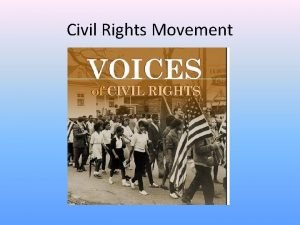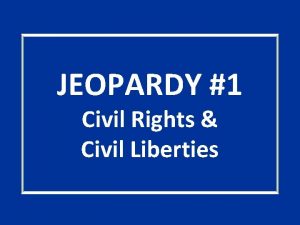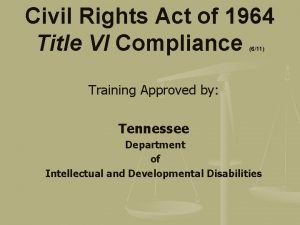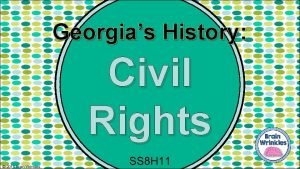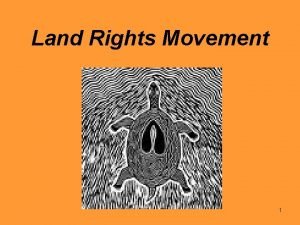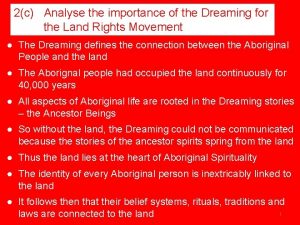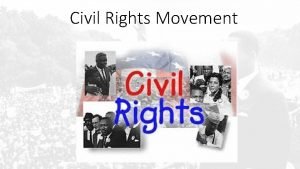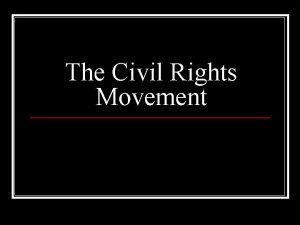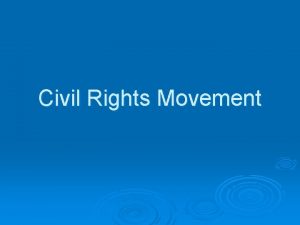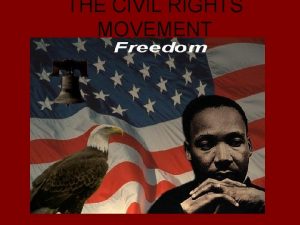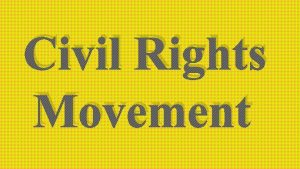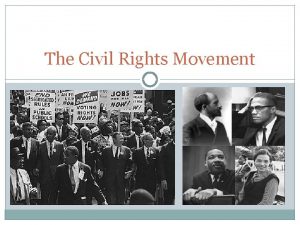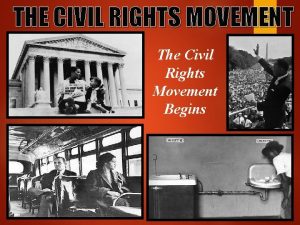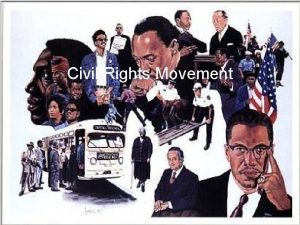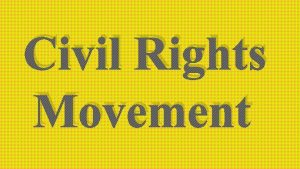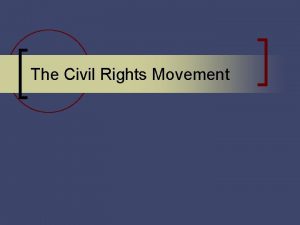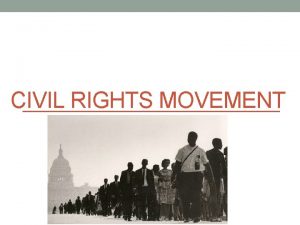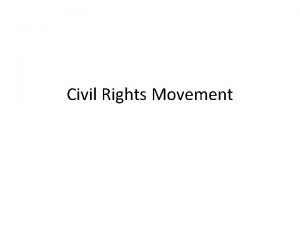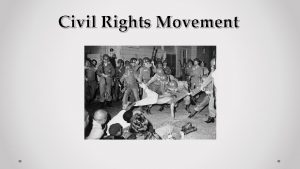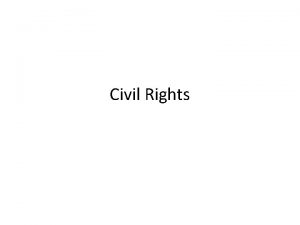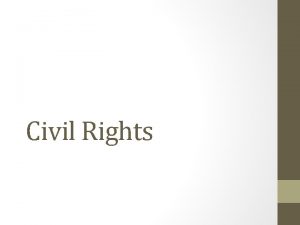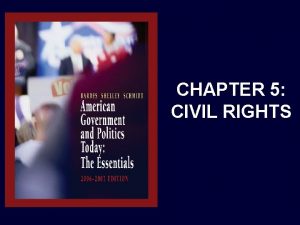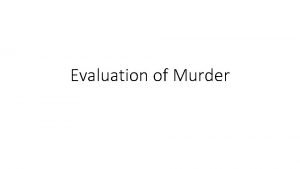Civil Rights Movement civil rights The Murder of



































![Vietnamization, 1969 -72 • Secret bombings of Cambodia ineffective; US invasion 1970 [more protests] Vietnamization, 1969 -72 • Secret bombings of Cambodia ineffective; US invasion 1970 [more protests]](https://slidetodoc.com/presentation_image_h2/4dbb4dea12665c90ea9b7d37c473fdf2/image-36.jpg)

















- Slides: 53

Civil Rights Movement

civil rights

The Murder of Emmett Till (1955) August, 1955, a fourteen year old boy in Money, Mississippi whistled at a white woman, Carolyn Bryant in a grocery store. Emmett Till was murdered, lynched, by two white men, J. W. Milam and Roy Bryant, that evening. Despite their arrests, the two men were eventually acquitted by an all white jury. New developments in 2004 allowed for the trial to be reopened, based on new evidence that suggested more people may have been involved.

The Lady That Started it All! • December 1955, 42 yrs. Rosa Parks was ordered by a Montgomery bus driver to give up her seat to white passengers. • Refused, arrested and fined $10 for sitting in the white section. • Blacks refused to ride buses until the law was changed. • Begins the Civil Rights Era as a national movement to bring about equality for Black Americans.

• Rosa Parks case led to the Montgomery Bus Boycott against segregation on public buses • Led by Martin Luther King, Jr. • Montgomery City Government ended segregation. Rosa parks Martin Luther King, Jr. • Leader for Black Civil Rights • Ended Jim Crow Laws • Promote integration • Increase voting rights • Bring about a true democracy • Rights deprived since Civil War • Non violence

Brown vs. board Brown vs. Board of Education, Topeka, Kansas üMay 1954, the Supreme Court overturned Plessy v. Ferguson and the "separate but equal" doctrine. üSegregation of children in public schools on the basis of race was unconstitutional and discrimination. üStates ordered to integrate their schools.

little rock • Central High School in Little Rock, Arkansas was the first high school in the South to integrate. • 1958, President Eisenhower sent Federal troops (101 st Airborne) to accompany the nine black students attending an all white high school. . .

FREEDOM SUMMERS AND RIDERS During the summers of 1961 to 1964, groups of Civil Rights activists boarded buses bound for the South to register African Americans to vote. civil rights

• August of 1963, Civil Rights March on Washington, Martin Luther King gives his “I Have a Dream Speech”. • Considered to be one of the best speeches in American History. • Huge turning point in the Civil Rights movement.

Malcolm X & The Black Panthers: • Malcolm X: – Northern from Detroit who believed violence was the key to equality. – Became leader of (OAAU) Organization of Afro. American Unity. • Black Panthers: – Activist in CA who wanted immediate equality for all blacks. Violent and militant; patrolled northern and western cities w/ handguns in search of racial violence against blacks. •

Civil Rights Changes: • Civil Rights Act of 1957: – Established a Civil Rights Commission, but had little real effect and was mostly symbolic. • Civil Rights Act of 1964: – Passed by LBJ, outlawed public segregation and discrimination, forbade racial discrimination in the workplace. • Equal Opportunity Commission: – Created by LBJ to enforce Civil Rights Act of 1964, and gave the prez more power to prosecute violators • 24 th Amendment: – Passed when LBJ outlawed poll taxes. • Voting Rights Act 1965: – Banned literacy tests and sent thousands of fed voting officials to the south to supervise registration. This got a huge jump in the black voter rate


GREAT SOCIETY

Today’s Objective: • Take notes on the Vietnam War.

America’s most unpopular war Cost LBJ his second term to Richard Nixon America’s longest and most expensive war Divided America on the homefront The best technical war money could buy America hardly ever lost a tactical battle A war America did not win Today, we are living with the “ghosts of Vietnam”.

Background of the War • Ho Chi Minh, a pro-Communist leader in Vietnam, led a group called the Vietminh against French control of his nation before, during, and after World War II. • After the Vietminh successfully defeated the French in 1954, a peace agreement Geneva Accords divided Vietnam into Communist North and anti-Communist South. – Ho Chi Minh led N. Vietnam – Ngo Dinh Diem led S. Vietnam. • The United States began providing economic aid to the French 950. In 1960, President Eisenhower sent military advisors to help S. Vietnam’s struggle against the North.

Ho Chi Minh The Hero? ?

INDIVIDUALS/GROUPS • Ho Chi Minh – North Vietnamese Army – Communist insurgents • Revolt against the South Vietnamese Govt – VC = Viet Cong or South Vietnamese guerrillas • • war sides POINT OF VIEW • North Vietnam leader • Free of foreign interference • Re-unite Vietnam under Ho Chi Minh as communists Ngo Dinh Diem – South Vietnamese Army United States • Dictator of SVN • Used US aid to keep power • Feared Communist takeover of South Vietnam • Supported Diem to keep SVN free • US willing to commit troops

• First democratically elected President of South Vietnam in 1955. • Next 7 years, he presided over an increasingly corrupt, nepotistic and repressive regime. • Communist guerrillas (VC) backed by North Vietnam launched a new rebellion • A civil disobedience led by the country's Buddhist monks contributed more directly to his downfall. • Brutal persecution of Buddhist monks in 1963 damaged Diem’s shaky international reputation. • With US support, Vietnamese generals overthrew and assassinated Ngo later that year.

Early Protests of Diem’s Government Self-Emulation by a Buddhist Monk protesting against the brutality of Diem’s government

The Vietnam War, 1964 to 1975 1964 Gulf of Tonkin Incident

Expanding Presidential Power The Gulf of Tonkin Resolution What Inspired the Gulf of Tonkin Resolution? What Was the Gulf of Tonkin Resolution? What Additional Powers Did It Give the President? In August 1964, Johnson announced that North Vietnamese torpedo boats had attacked American destroyers in the Gulf of Tonkin. However, some people doubted that this incident had happened and believed it was only an excuse for further U. S. involvement in Vietnam. The Gulf of Tonkin Resolution, passed by Congress in 1964, regarded peace and security in Southeast Asia as vital to American national interest, and it gave the President additional powers to assist any Southeast Asian country “requesting assistance in defense of its freedoms. ” Under the resolution, the President had authority to “take all necessary measures to repel any armed attack against the forces of the United States and to prevent further aggression. ” The resolution, therefore, changed the balance of power between Congress and the President.

U. S. Troop Deployments in Vietnam

The Vietnam War, 1964 to 1975 1964 Gulf of Tonkin Incident 1965 First sustained bombing of North Vietnam Operation rolling thunder. 1966 U. S. air raids over Hanoi, 1966 to 1968

The Vietnam War, 1964 to 1975 1964 Gulf of Tonkin Incident 1965 First sustained bombing of North Vietnam 1966 U. S. air raids over Hanoi, 1966 to 1968 Tet Offensive, Jan. 30 to Feb. 24

The Ho Chi Minh Trail • North Vietnamese troops and supplies entered South Vietnam via the Ho Chi Minh Trail, a route that passed through Laos and Cambodia.

Impact of the Tet Offensive

Who were the Enemy? The Vietcong consisted of a well organized guerilla fighting force in South Vietnam. Their guerilla and jungle hit and run tactics made them a menace for American, South Vietnamese, and other allied forces. Although they didn’t have the advanced weapons and money they used other methods of fighting.

Who are the Enemy? The Vietcong possessed underground networks of tunnels Passageways that contained hidden caches weapons and supplies that were difficult to locate and destroy.

divided US ESTABLISHMENT (50’s) ANTI-ESTABLISHMENT (60’s) • Called Middle America, the Silent Majority • Called counterculture Hippies, Flower Children • Supported Vietnam War • Opposed Vietnam War • Traditional American values: hard work, family and patriotism • Disillusioned with values of money, status, power; emphasized love, individual freedom, cooperation • Feared and disliked new styles of music and dress of youth • Music and fashion emphasized movement toward new society, greater freedom • Against use of illegal drugs • Used “mind-expanding” drugs, LSD

Feminist Movement • Betty Friedan-Feminine Mystique • Ms. • Equal Pay Act • Title VII • National Organization for Women • Equal Rights Amendment • Roe vs. Wade



American Morale Begins to Dip a. Disproportionate representation of poor people and minorities. a. Severe racial problems. a. Major drug problems. a. Officers in combat 6 mo. ; Enlisted men in combat for 12 mo.

Henry Kissinger Practical Politics Public Opinion • Kissinger understood • Realpolitik, or practical media to shape public politics. Under this opinion. policy, nations make decisions based on • Kissinger’s efforts in maintaining their ending the Vietnam strength rather than on War and easing Cold moral principles. War tensions made • Kissinger applied a him a celebrity. realpolitik approach to his dealings with China • Was often featured on and the Soviet Union, the cover of Time leading to better diplomatic relations with magazine, and in 1973 both nations. shared the Nobel peace prize. • Era on détente or relaxed tensions with communist powers.
![Vietnamization 1969 72 Secret bombings of Cambodia ineffective US invasion 1970 more protests Vietnamization, 1969 -72 • Secret bombings of Cambodia ineffective; US invasion 1970 [more protests]](https://slidetodoc.com/presentation_image_h2/4dbb4dea12665c90ea9b7d37c473fdf2/image-36.jpg)
Vietnamization, 1969 -72 • Secret bombings of Cambodia ineffective; US invasion 1970 [more protests] • SVN government & army built up – pacification 1969 -71; 90% of population safe (many moved to cities) – Viet Cong lose base; US victory! – now a conventional war of NV vs SV • US ground troops begin exiting in 1971.

The Vietnam War, 1964 to 1975 1970 Invasion of Cambodia, April 29 to June 29 1971 Invasion of Laos, Feb. 6 to March 1972 Haiphong harbor mined U. S. air raids over Hanoi

Peace Negotiations a US & Vietnamese argue for 5 mo. over size of conference table. Dr. Henry Kissinger & Le Duc Tho

The Ceasefire, 1973 a Conditions: 1. U. S. to remove all troops 2. North Vietnam could leave troops already in S. V. 3. North Vietnam would resume war 4. No provision for POWs or MIAs Last American troops left South Vietnam on March 29, 1973 a 1975: North Vietnam defeats South Vietnam a Saigon renamed Ho Chi Minh City a

The Vietnam War, 1964 to 1975 1973 U. S. troops withdraw 1975 Surrender in Saigon, April 20

The Costs 3, 000 Vietnamese killed v 58, 000 Americans killed v 300, 000 wounded v Of those that died 11, 465 were teenagers v 10, 000 dead from accidents v 153, 000 hospitalized & survive v 2, 590, 000 Americans in Vietnam. v Great Society programs underfunded v $150, 000, 000 in U. S. spending v U. S. morale, self-confidence, trust of government decimated v

The Costs v 1, 200 airplanes crash v 6, 727, 084 tons of bombs were dropped. v 3, 750 fixed wing aircraft v 4, 865 helicopters were lost. v 500, 000 acres of Vietnam were sprayed with defoliants, Agent Orange v The effects of Agent Orange may last up to 100 years.

Effects of Agent Orange

Nixon’s Moon Landing • During Nixon’s presidency, the United States achieved its goal of a successful moon landing. – On July 20, 1969, Neil A. Armstrong became the first man to walk on the moon. He was joined by Edwin E. “Buzz” Aldrin, Jr. , a fellow crewman on the Apollo 11 spacecraft. • Television viewers around the world watched the moon landing, and Apollo 11’s crew were treated as heroes when they returned. • Became a symbol of America turning the tide on the Cold War.

Nixon’s Domestic & Economic Policies • Stagflation: Stagflation described as a period of high inflation combined with economic stagnation, unemployment, or economic recession that occurred late 60’s and early 70 s. Stagflation Response • Taxed imports to help the balance of trade • Helpless to stop from oil embargo in retaliation OPEC (Organization of Petroleum Exporting Countries)on Countries) for Israeli support • Issues wage and price controls to reduce inflation and spur job growth.

Henry Kissinger Practical Politics • Realpolitik, or practical politics. Under this policy, nations make decisions based on maintaining their strength rather than on moral principles. • Kissinger applied a realpolitik approach to his dealings with China and the Soviet Union, leading to better diplomatic relations with both nations. • Era on détente or relaxed tensions with communist

Nixon’s Accomplishments: • Nixon’s Moon landing. – America’s victory against communism. • Ended the Vietnam War. • Era of Détente. – Decreased tensions between Russia and China. • Overcoming stagflation. – Increased the value of the dollar. • Strategic Arms Limitation Treaty (Salt I) & Anti Ballistic Mille Treaty (ABM). – Treaty to reduce the world’s supply of nuclear weapons.

• In June 1971, Daniel Ellsburg leaked the Pentagon Papers to the NY Times • A detailed study of US policy in Vietnam commissioned in 1967. (Showed US leaders had lied to American people. ) • President Nixon felt National Security was threatened. • Nixon was successful in obtaining a court order to stop publication but New York Times filed a lawsuit citing free press issues and violating no prior restraint • Nixon ordered Ellsburg’s psychiatrist’s office

PLUMBERS v Nixon established a secret group known as the plumbers to plug leaks v Started campaign of dirty tricks that included IRS harassment and derailing of Democratic frontrunner Edmund Muskie. v Funded by Committee to Re-Elect the President (CREEP) which used highly questionable fund raising tactics and raised over $20 million

The Watergate Break-In • In March 1972, a group within the (CREEP) made plans to wiretap the phones at the Democratic National Committee Headquarters at the Watergate apartment complex in Washington, D. C. • The group’s first attempt failed. During their second attempt on June 17, 1972, five men were arrested. • The money they carried was traced directly to Nixon’s reelection campaign, linking the break-in to the campaign. • The break-in and the cover-up resulted in

The Scandal Unfolds Woodward and Bernstein • Two young Washington Post reporters, Bob Woodward and Carl Bernstein, were influential in tracking down information to uncover the Watergate story. • Woodward and Bernstein believed that the White House would prove to be involved in the The Watergate Trial • At the trial of the Watergate burglars in early 1973, all the defendants either pleaded guilty or were found guilty. • Judge John J. Sirica, presiding over the trial, was not convinced that the full story had been told. • He sentenced the burglars to long prison terms, suggesting that their terms could be reduced if they cooperated with upcoming Senate

Impeachment Hearings and Nixon’s Resignation • Congress began the process of determining if they should impeach the President, or charge him with misconduct while in office. • On August 9, 1974, Nixon resigned, the first President ever to do so. Gerald Ford was sworn in as the new President.

The Stalemated 70’s, 1968– 1980 1. Could any of Nixon’s achievements in office compensate for his Watergate crimes? How should history remember Nixon?
 Civil rights webquest
Civil rights webquest Civil rights movement jeopardy
Civil rights movement jeopardy The civil rights movement
The civil rights movement Civil rights movement goal
Civil rights movement goal Civil rights movement essential questions
Civil rights movement essential questions Civil rights movement vocabulary
Civil rights movement vocabulary Mother of the modern day civil rights movement
Mother of the modern day civil rights movement Civil rights movement webquest
Civil rights movement webquest Program of civil disobedience movement
Program of civil disobedience movement Civil right movement def
Civil right movement def Non movement area
Non movement area Enumerate and define the kinds of axial movements
Enumerate and define the kinds of axial movements Civil rights collage
Civil rights collage Chapter 20 civil liberties protecting individual rights
Chapter 20 civil liberties protecting individual rights Civil rights sitins
Civil rights sitins Cacfp civil rights
Cacfp civil rights Civil rights bell ringers
Civil rights bell ringers Civil rights training child nutrition programs
Civil rights training child nutrition programs Chapter 14 postwar prosperity and civil rights
Chapter 14 postwar prosperity and civil rights Civil rights in child nutrition programs
Civil rights in child nutrition programs Civil rights cloze notes
Civil rights cloze notes Civil rights choice board
Civil rights choice board Right to die
Right to die Levittown apush
Levittown apush Title vii of the civil rights act
Title vii of the civil rights act Truman supports civil rights
Truman supports civil rights Civil rights in child nutrition programs
Civil rights in child nutrition programs What did sncc accomplish and how
What did sncc accomplish and how Unruh civil rights act real estate
Unruh civil rights act real estate Chapter 21 civil rights equal justice under law
Chapter 21 civil rights equal justice under law Unit 7: modern ga and civil rights
Unit 7: modern ga and civil rights Title vii of the civil rights act
Title vii of the civil rights act Characteristics of civil rights
Characteristics of civil rights Federally protected classes
Federally protected classes Civil rights graphic organizer
Civil rights graphic organizer Chapter 20 civil liberties protecting individual rights
Chapter 20 civil liberties protecting individual rights Civil rights timeline of events
Civil rights timeline of events Civil rights movment
Civil rights movment Chapter 20 civil liberties protecting individual rights
Chapter 20 civil liberties protecting individual rights Usda civil rights training
Usda civil rights training Civil rights jeopardy
Civil rights jeopardy Title vi of the civil rights act of 1964
Title vi of the civil rights act of 1964 Civil rights cloze notes 1
Civil rights cloze notes 1 Dreamtime.net.au
Dreamtime.net.au Women's rights movement
Women's rights movement Importance of the dreaming for the land rights movement
Importance of the dreaming for the land rights movement Positive vs negative rights
Positive vs negative rights Legal rights vs moral rights
Legal rights vs moral rights Negative right
Negative right Positive rights vs negative rights
Positive rights vs negative rights What are negative rights
What are negative rights What are littoral rights
What are littoral rights Negative right
Negative right Conclusion of rights
Conclusion of rights

